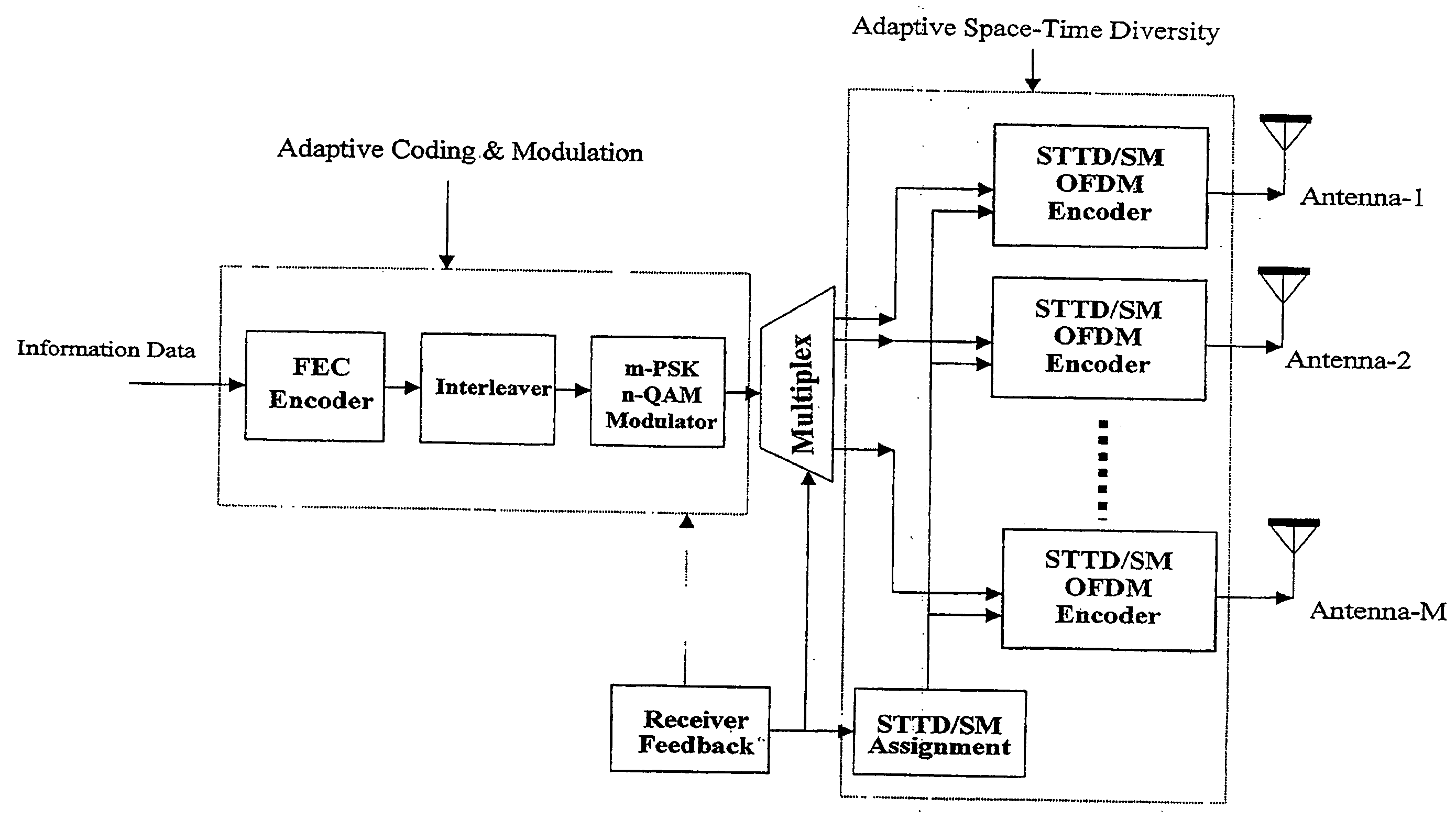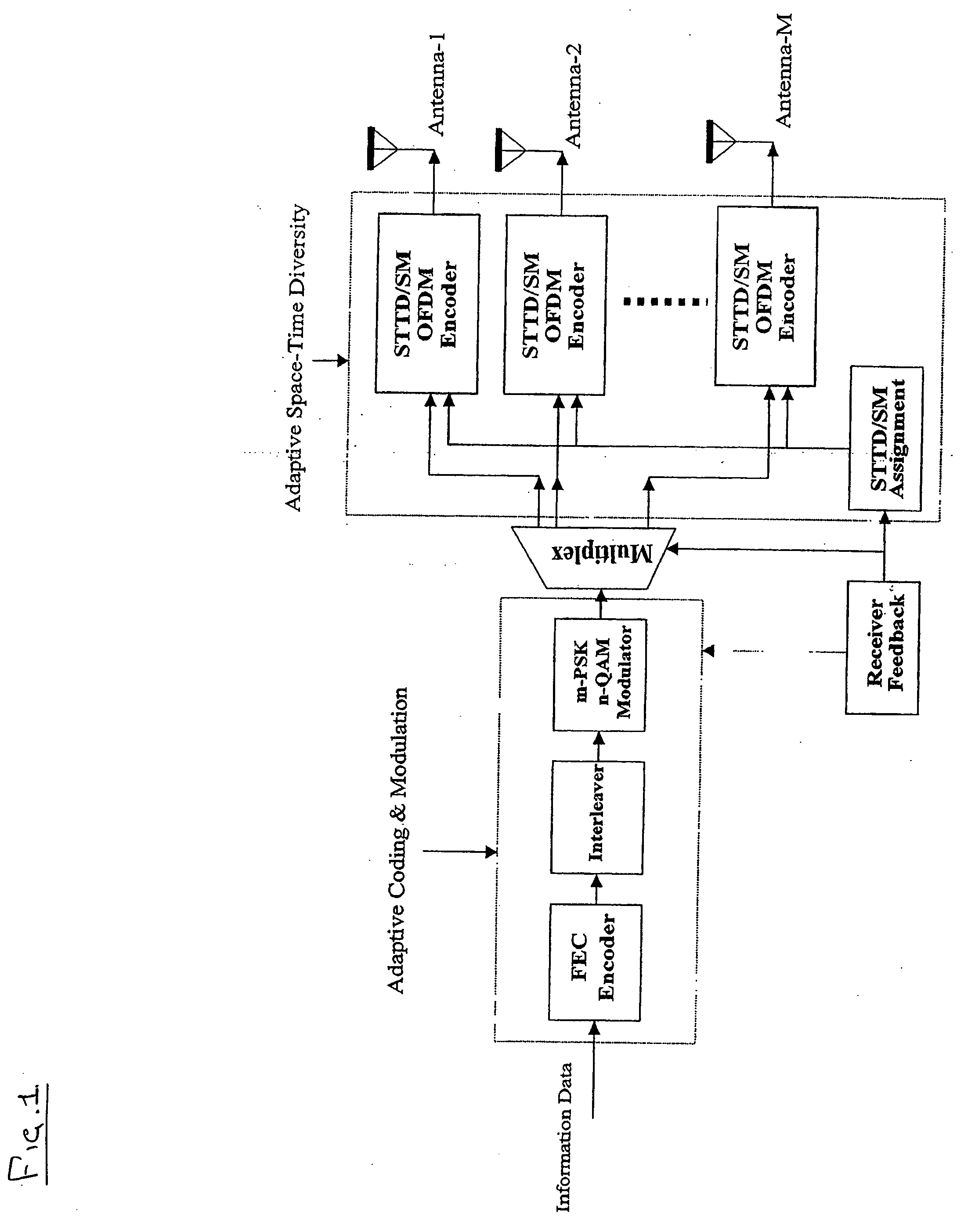Adaptive time diversity and spatial diversity for OFDM
a time diversity and spatial diversity technology, applied in the field of time diversity and spatial diversity, can solve the problems of increasing the data rate capacity, weak signal fading, and inability to parallel transmit data packets, so as to reduce adverse signal fading, increase data rate, and ensure gain. the effect of time diversity
- Summary
- Abstract
- Description
- Claims
- Application Information
AI Technical Summary
Benefits of technology
Problems solved by technology
Method used
Image
Examples
Embodiment Construction
[0034] The invention concerns a practical time and spatial diversity combination that fits into an OFDM system. The OFDM system of the invention can automatically adapt the channel variation and make trade off between time diversity and spatial diversity. In an exemplary environment, the data rate can be increased 1.8 times for 2×2 configuration (2 transmitters, 2 receivers), which gives 80 Mbps, and 2.7 times for 3×3 configuration) 3 transmitters, 3 receivers) which gives 121 Mbps within 6 MHz, while keep the robustness of the system.
[0035] Turning to the drawing, FIG. 1 shows a generic MIMO and OFDM transmitter system. In the figure, STTD and SM are the abbreviations of Space-Time-Transmitter Diversity and Spatial Multiplexing. The MIMO OFDM is configured as two level adaptations as shown in FIG. 1, namely, space / time diversity adaptation and coding / modulation adaptation. The space / time diversity adaptation is determined by the carrier to interference power ratio or signal to noi...
PUM
 Login to View More
Login to View More Abstract
Description
Claims
Application Information
 Login to View More
Login to View More - R&D
- Intellectual Property
- Life Sciences
- Materials
- Tech Scout
- Unparalleled Data Quality
- Higher Quality Content
- 60% Fewer Hallucinations
Browse by: Latest US Patents, China's latest patents, Technical Efficacy Thesaurus, Application Domain, Technology Topic, Popular Technical Reports.
© 2025 PatSnap. All rights reserved.Legal|Privacy policy|Modern Slavery Act Transparency Statement|Sitemap|About US| Contact US: help@patsnap.com



